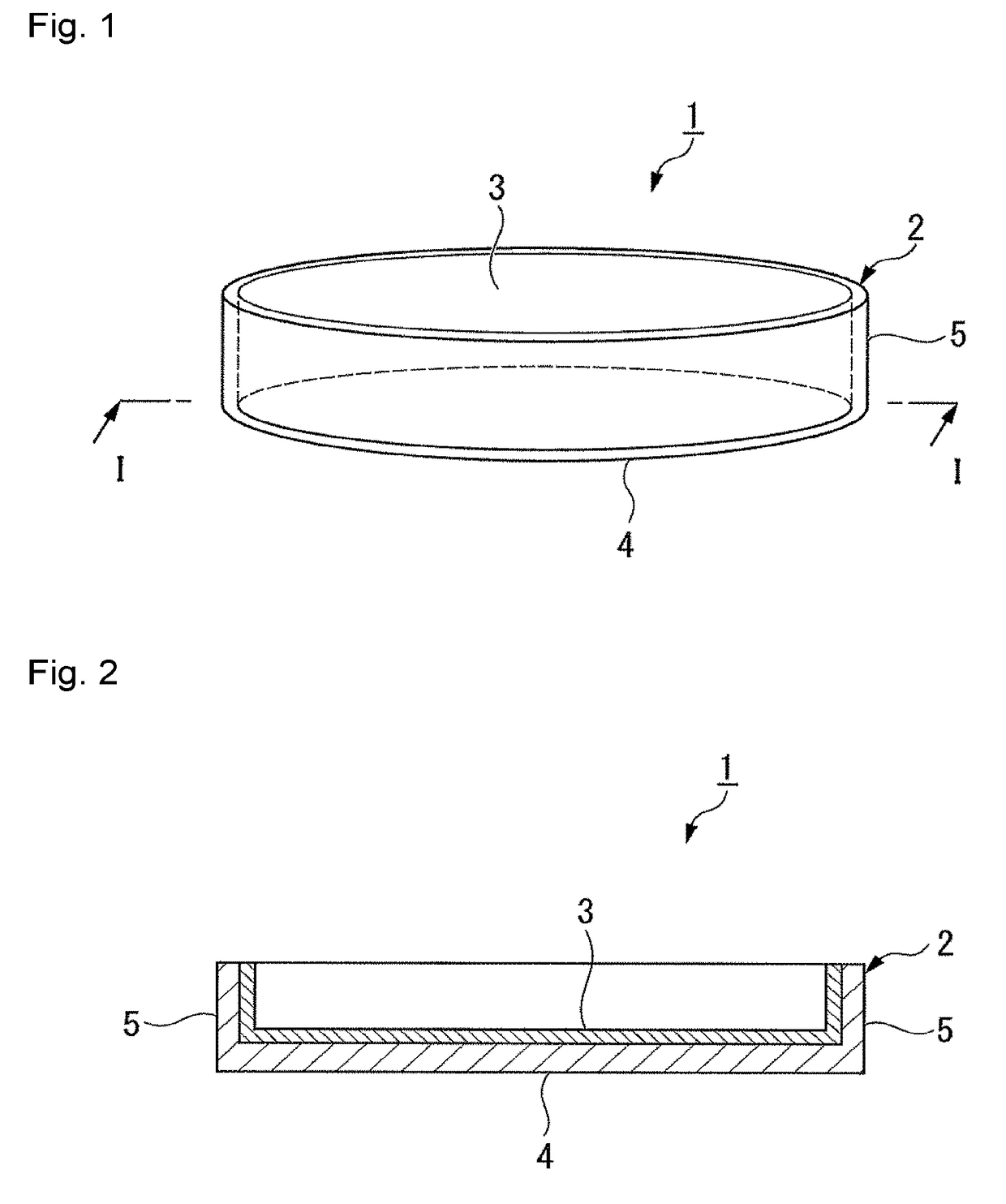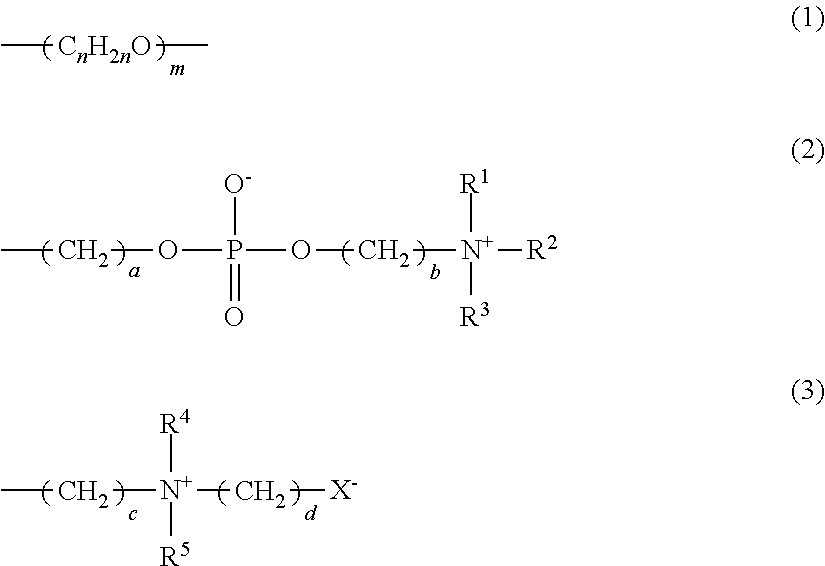Protein adhesion inhibitor
- Summary
- Abstract
- Description
- Claims
- Application Information
AI Technical Summary
Benefits of technology
Problems solved by technology
Method used
Image
Examples
production example 1
[0378]0.886 g (3.0 mmol) of MPC and 3.025 g (7.0 mmol) of C6FMA were weighed into a 300 mL three-necked flask, and 0.391 g of AIBN as a polymerization initiator, and 15.6 g of ethanol (EtOH) as a polymerization solvent were added. The molar ratio of C6FMA to MPC was made to be C6FMA / MPC=70 / 30, the total concentration of the monomers in the reaction solution was made to be 20 mass %, and the initiator concentration was made to be 1 mass %.
[0379]Inside of the flask was thoroughly purged with argon, then sealed and heated for 16 hours at 75° C. to conduct a polymerization reaction. The reaction mixture was cooled with ice and then, dropped in diethyl ether, to precipitate the polymer. The obtained polymer was sufficiently washed with diethyl ether, and then dried under reduced pressure to obtain a white powdery fluoropolymer (A-1).
[0380]The copolymer composition of the obtained fluoropolymer (A-1) was measured by H-NMR, and found to be C6FMA units / MPC units=44 / 56 (molar ratio).
production examples 2 to 15
[0381]Each polymer was obtained in the same manner as in Production Example 1 except that the types and charged amounts of monomers, and the type of the polymerization solvent were changed as shown in Table 1.
[0382]The charged ratio of monomers, the amount of the polymerization initiator added, and the type of the polymerization solvent, as well as the type, copolymer composition and fluorine atom content in the obtained fluoropolymer in each of Production Examples 1 to 15, are shown in Table 1.
TABLE 1FluoropolymerPolymerizationFluorinationProductionCharged ratio of monomersinitiatorPolymerizationCopolymer compositioncontentTgExampleMolar ratioMass ratio[mass %]solventTypeMolar ratioMass ratio[mass %][° C.]1C6FMA / MPCC6FMA / MPCAIBN1EtOHA-1C6FMA / MPCC6FMA / MPC30.611770 / 3077 / 2344 / 5654 / 462C6FMA / MPCC6FMA / MPCAIBN1EtOHA-2C6FMA / MPCC6FMA / MPC28.814750 / 5059 / 4141 / 5950 / 503C6FMA / MPCC6FMA / MPCAIBN1EtOHA-3C6FMA / MPCC6FMA / MPC16.017230 / 7039 / 6121 / 7928 / 724C6FMA / MPCC6FMA / MPCAIBN1EtOHX-1C6FMA / MPCC6FMA / MPC11.0...
production example 16
[0383]5 g (11.6 mmol) of C6FMA was weighed into a 300 mL three-necked flask, and 0.7 g of VPE as a polymerization initiator and 13.3 g of MP as a polymerization solvent were added. The total concentration of monomers in the reaction mixture was made to be 30 mass %, and the charged molar ratio of C6FMA to VPE was made to be C6FMA / VPE=97 / 3.
[0384]Inside of the flask was thoroughly purged with argon, and then, sealed and heated for 16 hours at 75° C. to conduct a polymerization reaction. The reaction solution was cooled with ice and then dropwise added to diethyl ether to precipitate the polymer. The obtained polymer was sufficiently washed with diethyl ether and then dried under reduced pressure to obtain a white powdery fluoropolymer (A-12).
PUM
| Property | Measurement | Unit |
|---|---|---|
| Fraction | aaaaa | aaaaa |
| Percent by mass | aaaaa | aaaaa |
| Temperature | aaaaa | aaaaa |
Abstract
Description
Claims
Application Information
 Login to View More
Login to View More - R&D
- Intellectual Property
- Life Sciences
- Materials
- Tech Scout
- Unparalleled Data Quality
- Higher Quality Content
- 60% Fewer Hallucinations
Browse by: Latest US Patents, China's latest patents, Technical Efficacy Thesaurus, Application Domain, Technology Topic, Popular Technical Reports.
© 2025 PatSnap. All rights reserved.Legal|Privacy policy|Modern Slavery Act Transparency Statement|Sitemap|About US| Contact US: help@patsnap.com



